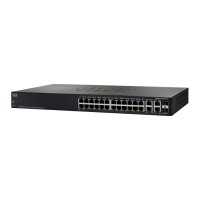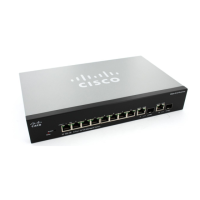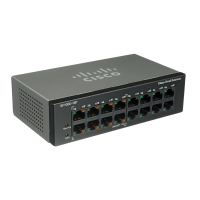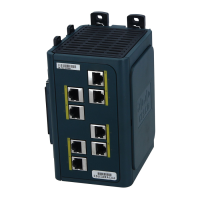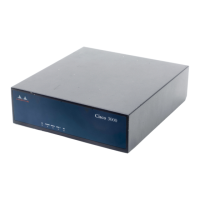Smartport
Configuring Smartport Using The Web-based Interface
172 Cisco Small Business 200, 300 and 500 Series Managed Switch Administration Guide (Internal Version)
11
NOTE Changes to Auto Smartport types cause the new settings to be applied to
interfaces which have already been assigned that type by Auto Smartport. In this
case, binding an invalid macro or setting an invalid default parameter value causes
all ports of this Smartport type to become unknown.
STEP 1 Click Smartport > Smartport Type Settings.
STEP 2 To view the Smartport macro associated with a Smartport type, select a
Smartport type and click View Macro Source.
STEP 3 To modify the parameters of a macro or assign a user-defined macro, select a
Smartport type and click Edit.
STEP 4 Enter the fields.
• Port Type—Select a Smartport type.
• Macro Name—Displays the name of the Smartport macro currently
associated with the Smartport type.
• Macro Type—Select whether the pair of macro and anti-macro associated
with this Smartport type is built-in or user-defined.
• User Defined Macro—If desired, select the user-defined macro that is to be
associated with the selected Smartport type. The macro must have already
been paired with an anti-macro.
Pairing of the two macros is done by name and is described in the
Smartport Macro section.
• Macro Parameters—Displays the following fields for three parameters in the
macro:
- Parameter Name—Name of parameter in macro.
- Parameter Value—Current value of parameter in macro. This can be
changed here.
- Parameter Description—Description of parameter.
You can restore the default parameter values by clicking Restore Defaults.
STEP 5 Click Apply to save the changes to the running configuration. If the Smartport
macro and/or its parameter values associated with the Smartport type are
modified, Auto Smartport automatically reapplies the macro to the interfaces
currently assigned with the Smartport type by Auto Smartport. Auto Smartport
does not apply the changes to interfaces that were statically assigned a
Smartport type.
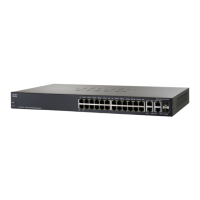
